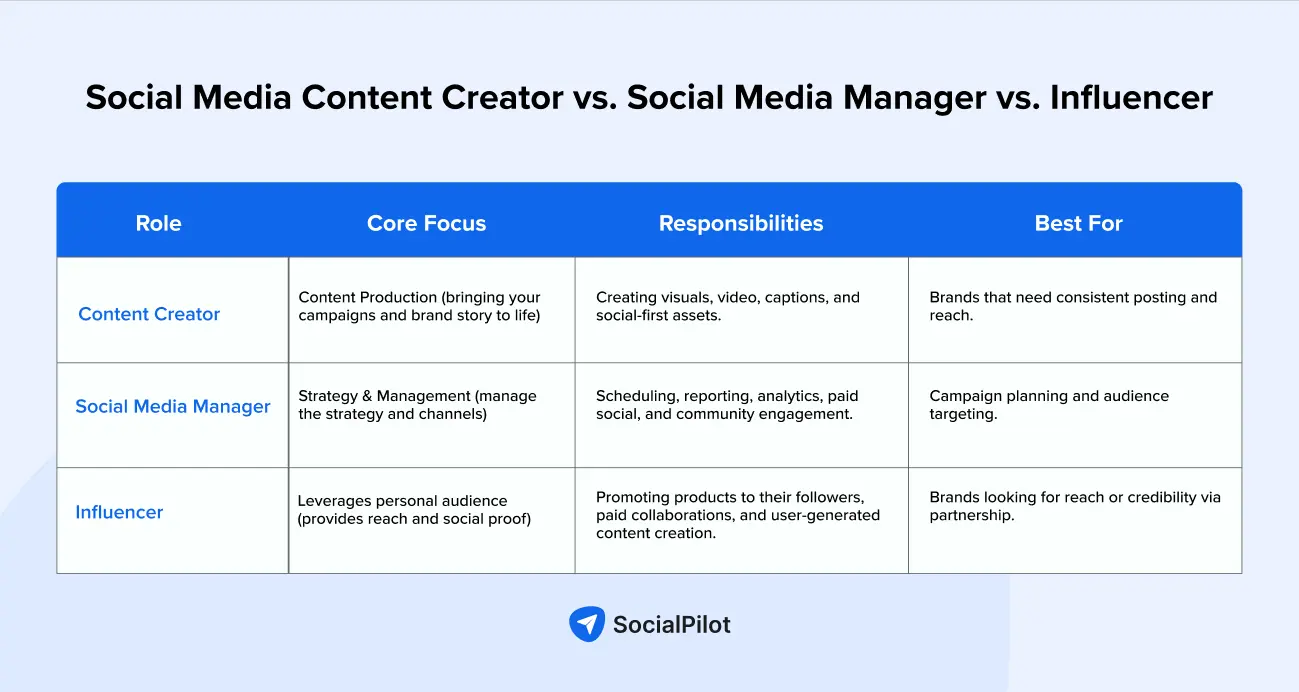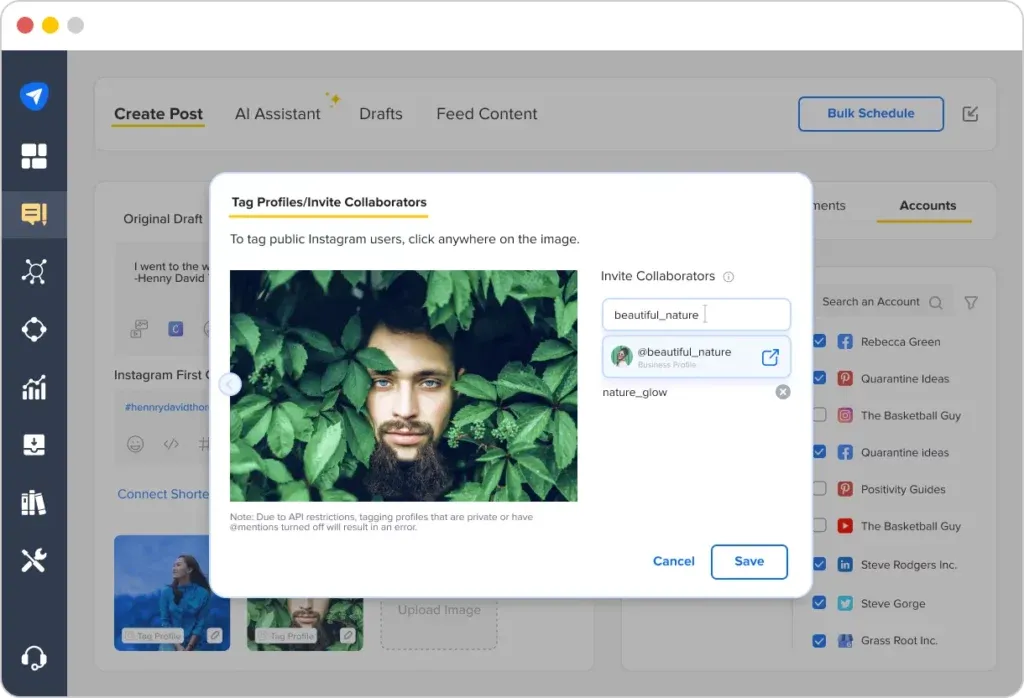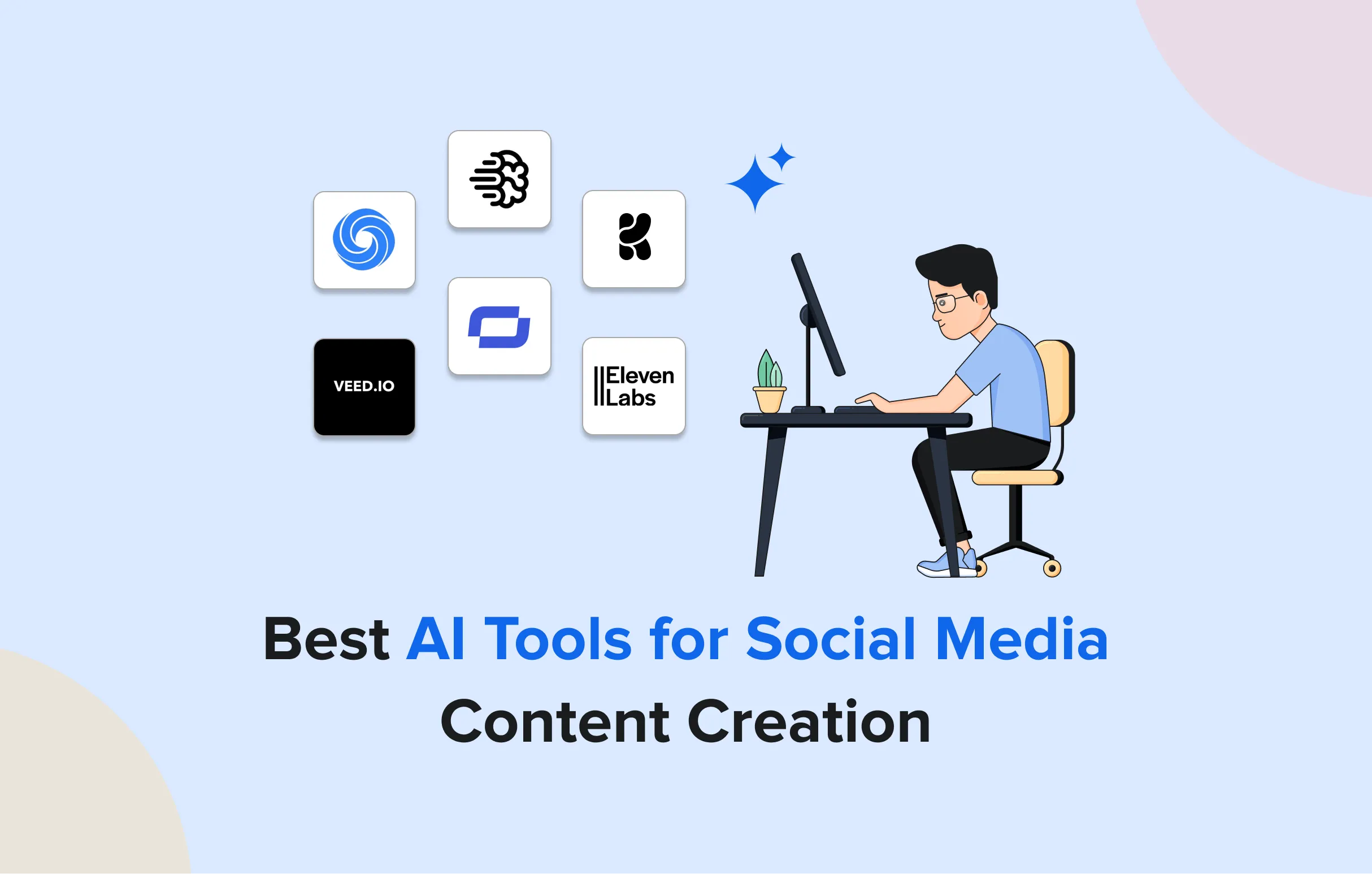With audiences increasingly influenced by social content, having a social media content creator on your team isn’t just helpful—it’s essential. We’ve observed that customers form opinions about brands long before purchasing, primarily based on what they see on social media channels.
The reality is, most teams are stretched thin, juggling marketing, sales support, and more, making consistent, high-quality content a real challenge. That’s where a strong social media content strategy comes into play, especially one that includes collaborating with creators. Partnering with influencers or micro-creators has become a key tactic across industries to expand reach, build public trust, and drive authentic engagement.
That’s why we believe bringing in a dedicated social content creator can make all the difference: boosting output, staying ahead of trends, and injecting fresh creativity.
This guide will walk you through what they do, when to hire, costs, and how to find the right fit.
A social media content creator is a creative producer responsible for developing brand-aligned, high-performing, engaging content across social media platforms to support marketing goals, including awareness, engagement, and conversions.
But they’re not just posting pretty pictures or trending dances. Unlike casual users or influencers, content creators are brought into a business to strategically support marketing objectives, increase engagement, build community, promote products, or drive conversions.
In the social media space, roles often overlap, and job titles can be confusing. Many businesses mistakenly think they need an influencer or a social media manager when what they actually need is a social media content creator.
Let’s break it down.

Not all content creators are the same, and that’s good. Many specialize by format, platform, or brand voice, helping you find the perfect fit for your goals.
Here’s a quick guide to common social media content creator types:

1. Short-Form Video Content Creators
Best for: TikTok, Instagram Reels, YouTube Shorts
Social media content creators craft catchy videos that quickly grab attention using trends, storytelling, and mobile editing software.
Ideal for: Product demos, behind-the-scenes, UGC-style stories, trend campaigns.
Hire if: You want to boost brand awareness and reach younger target audiences with video.
2. Visual Content Designers
Best for: Instagram, LinkedIn, Pinterest
Specialists in branded graphics, carousels, and infographics using social media tools like Canva and Adobe Suite.
Ideal for: Educational carousels, promo banners, quote graphics, brand templates.
Hire if: You want polished visuals that build authority and brand consistency.
3. Social Media Copywriters
Best for: Twitter/X, Threads, LinkedIn, Instagram captions
Copy pros who nail tone, CTAs, and punchy messaging in tight character limits.
Ideal for: Thought leadership, promo campaigns, conversational captions, threads.
Hire if: Your content needs a strong, engaging voice alongside visuals.
4. Content Repurposing Specialists
Best for: Brands with long-form content to recycle
Turn blogs, webinars, and podcasts into bite-sized social posts like reels, carousels, or threads.
Ideal for: Agencies with content libraries, SaaS thought leaders, and scaling cross-platform content.
Hire if: You want more ROI from existing content without heavy new production.
5. Platform Specialists
Best for: Brands focusing on one platform
Experts are deeply versed in a platform’s trends, culture, and best practices.
Ideal for: TikTok-only creators, LinkedIn ghostwriters, YouTube Shorts editors.
Hire if: You want to dominate a single channel instead of spreading thin.
6. Live Video Hosts & Streamers
Best for: Real-time engagement on Instagram Live, Twitch, Facebook Live
Talented content creators who connect authentically with target audiences through live Q&As, events, and interactive streams.
Ideal for: Brands wanting real-time audience interaction, event coverage, Q&A sessions, or community building through authentic live broadcasts.
Hire if: You want to build community and boost engagement through live formats.
7. Podcast Content Creators
Best for: Brands leveraging audio platforms like Spotify or Apple Podcasts
Creators who produce, edit, and promote podcast episodes aligned with brand messaging.
Ideal for: Businesses aiming to establish thought leadership, share deep-dive stories, interviews, or industry insights through audio content.
Hire if: Your social media strategy includes audio storytelling and thought leadership.
A social media content creator brings your social media marketing strategy to life through engaging, platform-specific content. They’re not just producing assets, they’re shaping the brand’s presence online.
Social media marketing content creators are responsible for the full creative process:
- Content ideation: Brainstorming and identifying content angles that resonate with your audience.
- Production: Crafting visuals, videos, captions, and other content that fits your brand’s voice.
- Trend adaptation: Staying on top of social platform trends and integrating them into your content to maximize reach.
- Editing and refining: Reviewing content to ensure it aligns with brand standards and performs well on social media platforms.
How Do They Fit into a Team?
A content creator for social media works closely with several roles within the marketing team:
- Works with Marketing Strategists to align social media marketing content creation with campaign goals.
- Coordinates with Social Media Managers to publish consistently and engage at the right time.
- Collaborates with Graphic Designers or Brand Teams to ensure visual consistency.
- Partners with Paid Media Teams to produce organic-style content for ads.
- Takes input from Sales or Product Teams to highlight value propositions or feature launches.
How Does This Work in an Agency Setting?
If you’re an agency, the social content creator:
- Can be assigned to specific client accounts for consistency.
- Reports to an account manager or social strategist.
- Joins client meetings if needed (especially on content-focused projects).
- Works with your internal design or video teams where overlap exists.
Hiring a content creator isn’t about chasing trends; it’s a strategic move that supports business growth, efficiency, and visibility. Below are the most common (and costly) signs that hiring a dedicated content creator for social media is time.
1. You’re Scaling, but Content Production Can’t Keep Up
You’re growing fast. You’ve got marketing goals, product launches, and brand stories to share, but your internal team can’t create content good enough to support them.
Signs: You’re missing posting windows, recycling old content, or relying on templated posts that feel generic.
You’ve invested in planning and social media strategy, maybe even hired a social media manager or agency, but no one’s creating content that lives up to the plan.
Signs: Campaigns are delayed, creative briefs sit untouched, or you’re scrambling for last-minute posts.
3. Your Engagement Is Flat, but Your Feed Lacks Energy
Even if you’re posting consistently, your content doesn’t spark interest. The visuals feel outdated, the messaging doesn’t land, or your brand blends in.
Signs: Low reach, minimal shares, and little audience interaction. Content is “there” but not connecting.
4. You’re Launching a Product, Campaign, or Brand
You’re preparing for a significant initiative and need to create a content bank of platform-native posts that are scroll-stopping and on-brand, fast.
Signs: You have a launch calendar but insufficient assets to fill it out. Or, your current team is too tapped to meet the creative demands.
5. You’re Running Paid Ads, but Neglecting Organic
You’ve committed a budget to paid campaigns, but your organic social media presence is weak. That’s a missed opportunity for brand trust, engagement, and remarketing.
Signs: Paid ads outperform organic by a wide margin, but no content strategy supports long-term audience building.
6. You’re Outsourcing to Designers or Freelancers, but It’s Not Working
You’re cobbling together content via contractors or graphic designers, but the posts lack cohesion, tone, or strategy.
Signs: Too many revisions, no one “gets” your brand voice, and inconsistent timelines.
If You Identify With 2 or More of the Above. It’s time. You’re leaving value on the table by not having someone who lives and breathes content inside your brand or team.
Where to Find and How to Hire the Right Content Creator?
Finding the right content creator starts with knowing where to look and how to evaluate their skills. But it’s also about choosing the right social media tools and systems to make the hiring and collaboration process smooth.
You can find the right match for your brand on social media content creator platforms, agencies, or various job sites. Below are some social media tools our team uses to find content creators.
- Freelance Platforms: Websites like Upwork, Fiverr, and Freelancer are great for finding freelance content creators with specific skills.
- Creative Agencies: Agencies specializing in content creation often have a roster of experienced creators who can work on various platforms.
- Job Boards and Social Networks: LinkedIn, Indeed, and Glassdoor are great for posting full-time roles. Instagram, Twitter, and other social media platforms can also be valuable sources for discovering creators actively posting and engaging with their audience.
- Content Creator Marketplaces: Platforms like Collabstr or Creator.co allows you to directly connect with creators based on your industry or niche.
How to Evaluate and Hire a Content Creator?
Hiring a social content creator just by looking at their followers is insufficient. You must evaluate their background, portfolio, and more. Here’s what to check before you finalize a creator for your brand:

- Review Their Portfolio: Look for versatility and a portfolio that matches your brand’s aesthetic and style.
- Assess Creativity and Fit: Ensure they can adapt to your brand’s tone and audience while being innovative.
- Check Experience: Experience in your industry can provide valuable insights, but also look at their ability to adapt to different industries.
- Ask for References or Testimonials: Get insight into their work ethic, timeliness, and quality from past clients.
- Give the Trial Project: Offering a trial project is a great way to evaluate their skills and see if they align with your expectations.
Freelance vs. In-House vs. Agency-Supplied Social Content Creator: Cost & Which One’s Right?
Choosing between freelance, in-house, or agency-supplied creators depends on your needs, budget, and the scale of your content production.
From our experience collaborating with content creators on social media, here is what they are best for and how much they cost.
| Model | Cost Range | Best For | Considerations |
| Freelance Content Creator | $25 to $150 per hour | Flexible projects or budget-conscious brands. | May need oversight; trial period recommended. |
| In-House Hire | $40,000 to $80,000 per year | Scaling brands with daily engaging content needs. | Higher cost, but total alignment and control. |
| Agency-Supplied | $5,000 to $15,000 per month | Turnkey creative solution with strategic input. | Usually includes QC, brand alignment, and fast output. |
Being in the social media industry, we have collaborated with several creators over the years and discovered that healthy management of your relationship with a social content creator is key to a successful campaign.
Here are some tips for smooth communication, clear expectations, and effective content management that have always helped us.
1. Set Clear Expectations
Ensure everyone involved in engaging content creation is aligned on deliverables, tone, and deadlines. Clear communication from the start sets the foundation for a successful partnership.
2. Track Performance Regularly
Regularly assess the performance of your content to measure its impact. Use analytics tools to gauge engagement metrics, reach, and ROI. This insight helps refine strategies and improve content.
3. Maintain Open Communication
Keep lines of communication open for continuous feedback and collaboration. It ensures alignment with your brand’s evolving goals and allows for creative adjustments.
4. Streamlining Post Collaboration
Collaborative posts on Instagram allow multiple accounts to co-author and share a single post, enhancing visibility as the post appears on all collaborators’ feeds once they accept the invitation to join the collaboration.
It extended reach, enhanced engagement, and streamlined workflow.
Are you tired of endless back-and-forth on content approvals?
SocialPilot’s Instagram collaborative post feature allows you to invite up to three collaborators directly through the platform.
You can co-author posts, suggest edits, and approve content seamlessly, ensuring your collaborative efforts align with your brand’s voice and objectives.

We collaborate with content creators often, and our experience makes us hire more of them. It’s all because of how much value they bring and what they help us achieve.
When a content creator is integrated into your marketing function, they elevate your brand’s presence, free up your team’s time, and turn social into an actual business asset. Here’s how:
1. Increase Consistency Without Burning Out Your Team
Social content creators ensure that your brand shows up consistently and strategically, not just when someone on your team has time to post. Consistent content builds algorithm momentum and keeps your brand at the top of your mind.
Brands that post at least once daily on Instagram see 2x higher engagement than those that post less frequently.
We at SocialPilot have analyzed 4.4 million Instagram posts from 45,700 accounts to uncover trends in posting frequency, and the results show there’s no one-size-fits-all approach. Some accounts thrive with daily posts, while others see growth even with less frequent activity.
Here’s a visual representation of our findings:

2. Make Platform-Native Content That Actually Performs
A great social media content creator knows how to adapt content to the strengths of each platform. A carousel that kills it on LinkedIn won’t work on TikTok, and vice versa.
Hiring a platform-savvy creator means:
- Better engagement metrics
- More visibility via the algorithm boosts
- A more professional and polished brand presence
3. Better Performing Paid Ads
Content creators for social media produce organic-quality creative that often outperforms traditional ad creative. Many of today’s best-performing paid social ads mimic the native content that real people create.
4. Faster Campaign Execution
With a media content creator on your team, content doesn’t get bottlenecked. They can take a brief, develop visuals and copy, and turn it around quickly, without waiting on multiple departments.
5. Stronger Brand Identity
Creators are often the bridge between brand and audience. They humanize your message, build familiarity, and make your brand feel approachable.
6. Real-Time Trend Adaptation
Your social content creator is on the ground floor of social, watching trends, sounds, formats, and user behavior. They spot opportunities your team might miss.
A content creator isn’t a cost; they’re a multiplier. They increase your visibility, improve your results, and protect your team from burnout.
Finding the Right Fit for Your Brand
Choosing the right social media content creator is a strategic move that can elevate your brand’s presence and engagement.
Whether you go with a freelancer, in-house hire, or agency, look for someone who truly understands your voice, aligns with your goals, and adapts to ever-changing platform trends.
Pairing the right creator with practical collaboration tools like SocialPilot can streamline your engaging content workflow and help your team focus on growth and creativity.



